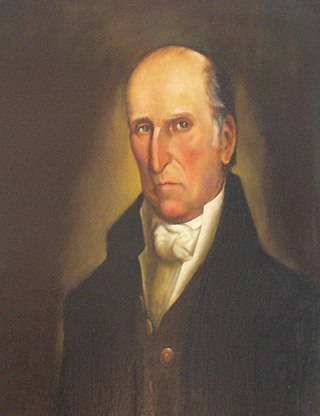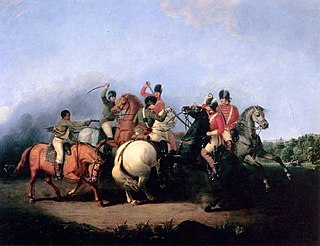
The Patriot is a 2000 American epic historical drama war film directed by Roland Emmerich and written by Robert Rodat. The film stars Mel Gibson, Heath Ledger, Joely Richardson, Jason Isaacs, Chris Cooper, and Tom Wilkinson. Set in Berkeley County, South Carolina, it follows Benjamin Martin (Gibson), an American colonist opposed to going to war with Great Britain but, along with his son Gabriel (Ledger), gets swept into the American Revolutionary War when his home life is disrupted, and one of his sons is murdered by a cruel British officer (Isaacs). Rodat has said Martin is a composite character based on four historical men: Andrew Pickens, Francis Marion, Daniel Morgan and Thomas Sumter.

Brigadier General Francis Marion, also known as the "Swamp Fox", was an American military officer, planter, and politician who served during the French and Indian War and the Revolutionary War. During the American Revolution, Marion supported the Patriot cause and enlisted in the Continental Army, fighting against British forces in the Southern theater of the American Revolutionary War from 1780 to 1781.

Williamsburg County is a county located in the U.S. state of South Carolina. As of the 2020 census its population was 31,026. The county seat and largest community is Kingstree. After a previous incarnation of Williamsburg County, the current county was created in 1804.

Kingstree is a city and the county seat of Williamsburg County, South Carolina, United States. The population was 3,328 at the 2010 census.

Andrew Pickens was a militia leader in the American Revolution. A planter and slaveowner, he developed his Hopewell plantation on the east side of the Keowee River across from the Cherokee town of Isunigu (Seneca) in western South Carolina. He was elected as a member of the United States House of Representatives from western South Carolina. Several treaties with the Cherokee were negotiated and signed at his plantation of Hopewell.
Robert Johnson (1682–1735) served as the governor of South Carolina from 1717 to 1719 and from 1729 to 1735. Johnson ordered Colonel William Rhett to engage the notorious pirate Stede Bonnet's sloops in the Battle of Cape Fear River with the Charleston Militia on sea in 1718. His grandson was South Carolina Senator Ralph Izard.

The Battle of Waxhaws was a military engagement which took place on May 29, 1780 during the American Revolutionary War between a Patriot force led by Abraham Buford and a British force led by Banastre Tarleton near Lancaster, South Carolina. Buford's men consisted of Continental Army soldiers, while Tarleton's force was mostly made up of Loyalist troops. After the two forces sighted each other, Buford rejected an initial demand to surrender. Tarleton's cavalrymen launched a charge against the Patriot troops, which led many of Buford's men to throw their arms down in surrender. However, as Tarleton was shot under his horse during the charge, his infuriated soldiers attacked their Patriot opponents, killing several.
South Carolina was outraged over British tax policies in the 1760s that violated what they saw as their constitutional right to "no taxation without representation". Merchants joined the boycott against buying British products. When the London government harshly punished Massachusetts for the Boston Tea Party, South Carolina's leaders joined eleven other colonies in forming the Continental Congress. When the British attacked Lexington and Concord in the spring of 1775 and were beaten back by the Massachusetts Patriots, South Carolina Patriots rallied to support the American Revolution. Loyalists and Patriots of the colony were split by nearly 50/50.

The Battle of Fishing Creek, also called the Battle of Catawba Ford, was an American Revolutionary War battle fought on August 18, 1780, between American and British forces including the 71st Foot. It was fought near the junction of Fishing Creek and the Catawba River in South Carolina. British forces under Banastre Tarleton surprised the militia company of Thomas Sumter, killing a significant number, taking about 300 captives, and very nearly capturing Sumter, who some say was asleep at the time of the attack.
Black Mingo Creek is a tributary to the Black River in coastal South Carolina. The creek derives its name from the Mingo, a tribe that once inhabited the fork made by the junction of Indiantown Swamp and Black Mingo Creek.

Indiantown is an unincorporated community in rural Williamsburg County, South Carolina, United States. Prior to the arrival of Europeans to North America, it was the site of a historic Native American village.

The southern theater of the American Revolutionary War was the central theater of military operations in the second half of the American Revolutionary War, 1778–1781. It encompassed engagements primarily in Virginia, Georgia, North Carolina, and South Carolina. Tactics consisted of both strategic battles and guerrilla warfare.
Barbecue is an unincorporated community located in the Barbecue Township of Harnett County, North Carolina, United States. It is a part of the Dunn Micropolitan Area, which is also a part of the greater Raleigh–Durham–Cary Combined Statistical Area (CSA) as defined by the United States Census Bureau.
The Battle of Black Mingo was a skirmish during the American Revolution. It took place in September 1780 in the vicinity of Dollard's Tavern at Willtown near Rhems, South Carolina. General Francis Marion attacked and scattered a contingent of Loyalist troops that had been left to secure the region by Colonel Banastre Tarleton after his destructive march through the area. The Loyalists, under Colonel John Coming Ball, were driven into Black Mingo swamp after suffering significant casualties.
Huck's Defeat or the Battle of Williamson's Plantation was an engagement of the American Revolutionary War that occurred in present York County, South Carolina on July 12, 1780, and was one of the first battles of the southern campaign to be won by Patriot militia.
Henry Mouzon II was a colonial-era American patriot and civil engineer. He prepared the definitive survey of the North and South Carolina Colonies prior to the start of the American Revolutionary War. He served as an officer of the Continental Line and as a militia officer in Francis Marion's Brigade, where he distinguished himself in the Battle of Black Mingo.
The Battle of Fishdam Ford was an attempted surprise attack by British forces under the command of Major James Wemyss against an encampment of Patriot militia under the command of local Brigadier General Thomas Sumter around 1 am on the morning of November 9, 1780, late in the American Revolutionary War. Wemyss was wounded and captured in the attack, which failed because of heightened security in Sumter's camp and because Wemyss did not wait until dawn to begin the attack.

Mingo Creek Presbyterian Church and Churchyard is a church and historic location in Washington County, Pennsylvania. It is located at the junction of Pennsylvania Route 88 and Mingo Church Road in Union Township, Washington County, Pennsylvania, near Courtney, Pennsylvania. It is a member of the Washington Presbytery.

The Battle of Torrence's Tavern was a minor engagement of the American Revolutionary War that took place in what was the western portion of Rowan County, North Carolina, approximately 10 miles (16 km) east of the Catawba River near modern-day Mooresville in Iredell County. Torrence's Tavern was a part of the larger Southern campaign of the American Revolution, which, by 1780–1781 involved a series of clashes between the British Army and Loyalist militia and the Continental Army and Patriot militia in the Piedmont region of North and South Carolina.
The Battle of Tearcoat Swamp was a battle during the American Revolutionary War between Lieutenant Colonel Francis Marion's Patriot militia, and a Loyalist Militia led by Lieutenant Colonel Samuel Tynes. The battle took place on 25 October 1780 in present-day Clarendon County, South Carolina.










